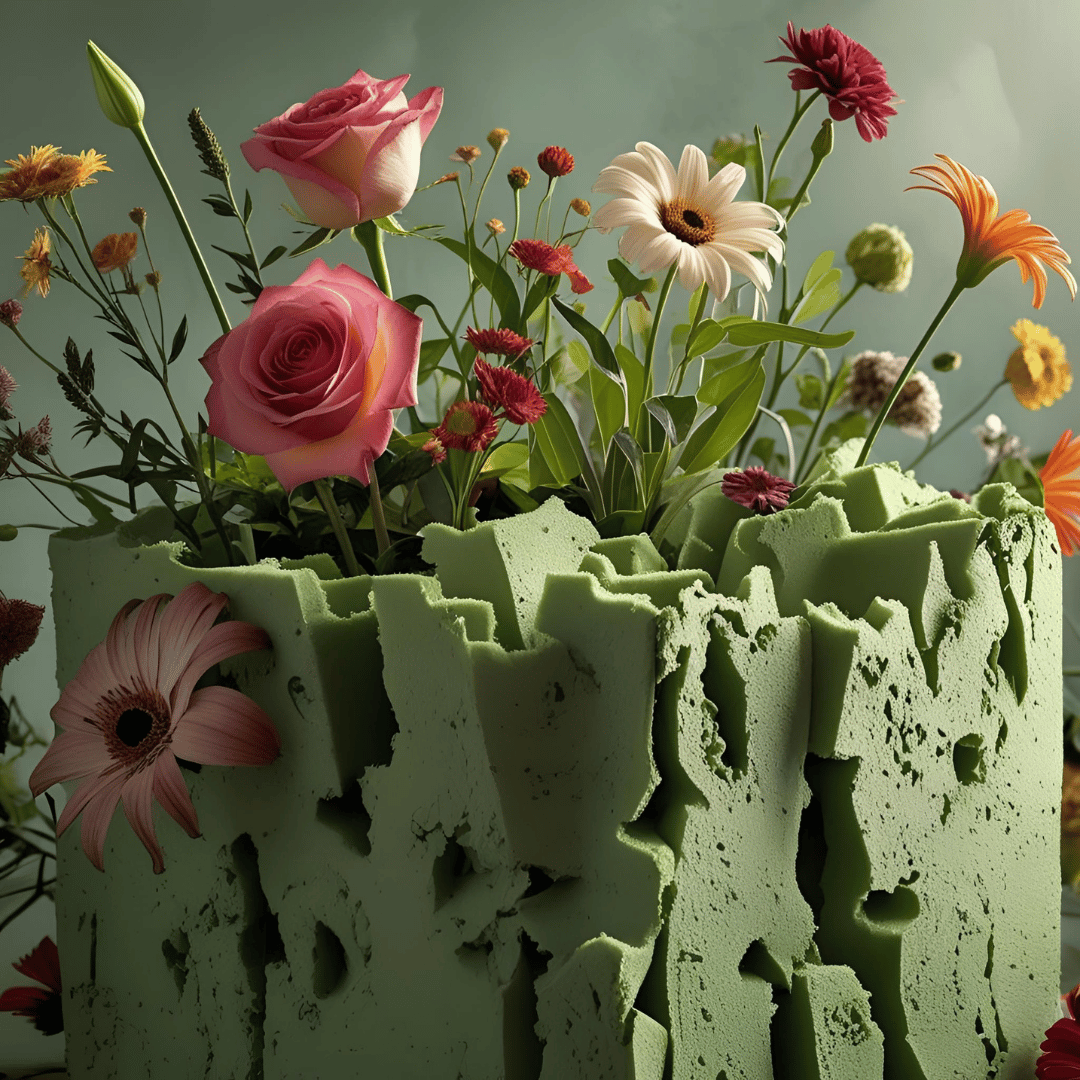
The Dark Side of Floral Foam: Why It’s Time to Rethink This Floral Staple
Share
For decades, floral foam (those light green, brick-shaped blocks) has been a staple in floral design. It’s praised for its convenience, stability, and water-holding capabilities. But beneath its usefulness lies a troubling reality: floral foam is one of the most environmentally damaging tools in the floral industry.
As the conversation around sustainability deepens, many florists and flower lovers are starting to ask: Is floral foam really worth it?
Let’s take a closer look at the hidden costs of floral foam and why so many are switching to more eco-friendly alternatives.
🌍 What Is Floral Foam, Really?
Floral foam (often known by brand names like Oasis) is a synthetic product made from phenol-formaldehyde, a type of plastic derived from petroleum. It’s molded into soft bricks that soak up water, making it easy to insert stems and keep arrangements hydrated and secure.
But despite its ease of use, floral foam is far from harmless.
🚫 5 Major Problems with Floral Foam
1. It’s Not Biodegradable
Floral foam is essentially plastic—and it doesn’t break down in nature. While it might crumble into tiny pieces, those particles persist for hundreds of years, polluting soil, rivers, and oceans.
2. It Creates Microplastic Pollution
When floral foam breaks apart, it turns into microplastics—tiny particles that are nearly impossible to remove from the environment. These particles enter water systems and food chains, harming marine life and ecosystems.
3. It Contains Toxic Chemicals
Made with formaldehyde and phenol, floral foam contains substances known to be toxic to humans and potential carcinogens. Florists who regularly handle dry or dusty foam can inhale harmful particles, raising concerns about long-term exposure.
4. It’s Single-Use Waste
Floral foam is used once and then tossed—often after a single event or arrangement. It’s a non-recyclable, single-use plastic, contributing to the floral industry’s growing waste problem.
5. It Harms Aquatic Life
Disposal of floral foam often involves rinsing it down drains or letting it wash away outside, which can send microplastics directly into waterways. Studies have shown these particles harm fish and aquatic invertebrates, some of which mistake them for food.
💐 The Hidden Irony
Floral foam is used to hold natural, living beauty (flowersa) but its production and disposal pollute the very environment those flowers come from.
🌱 Sustainable Alternatives to Floral Foam
Thankfully, florists around the world are embracing foam-free floral design. Some eco-friendly alternatives include:
- Kenzan (Pin Frogs) – A reusable, spiked base that holds stems securely. Perfect for ikebana and modern arrangements.
- Chicken Wire & Tape Grids – An old-school trick that still works wonders for larger designs.
- Moss Pillows – Natural and biodegradable, often used for outdoor installations.
- Agrawool or Flower Foam Alternatives – A newer generation of compostable design mediums, though these still require scrutiny.
🌸 Why It Matters
Sustainable floral design isn’t just a trend—it’s a responsibility. As creatives who work so closely with nature, we owe it to the planet (and ourselves) to make choices that respect and preserve the ecosystems we draw inspiration from.
It’s not about perfection—it’s about progress. Even small steps, like swapping foam for a kenzan or using a tape grid, can make a meaningful impact over time.
🌿 Final Thoughts
Floral foam may be convenient, but its environmental cost is too high. By choosing foam-free methods, you’re not only protecting the planet—you’re elevating your artistry and aligning with a more thoughtful, conscious approach to design.
So next time you build a bouquet or design a centerpiece, ask yourself: Can I do this without floral foam?
Chances are, the answer is yes—and your flowers (and the Earth) will thank you for it.
Interested in foam-free tools? Check out our favorite sustainable options from Floral Genius, including kenzan flower frogs, pin cups, and more.
Let’s create beauty that doesn’t leave a mess behind.
